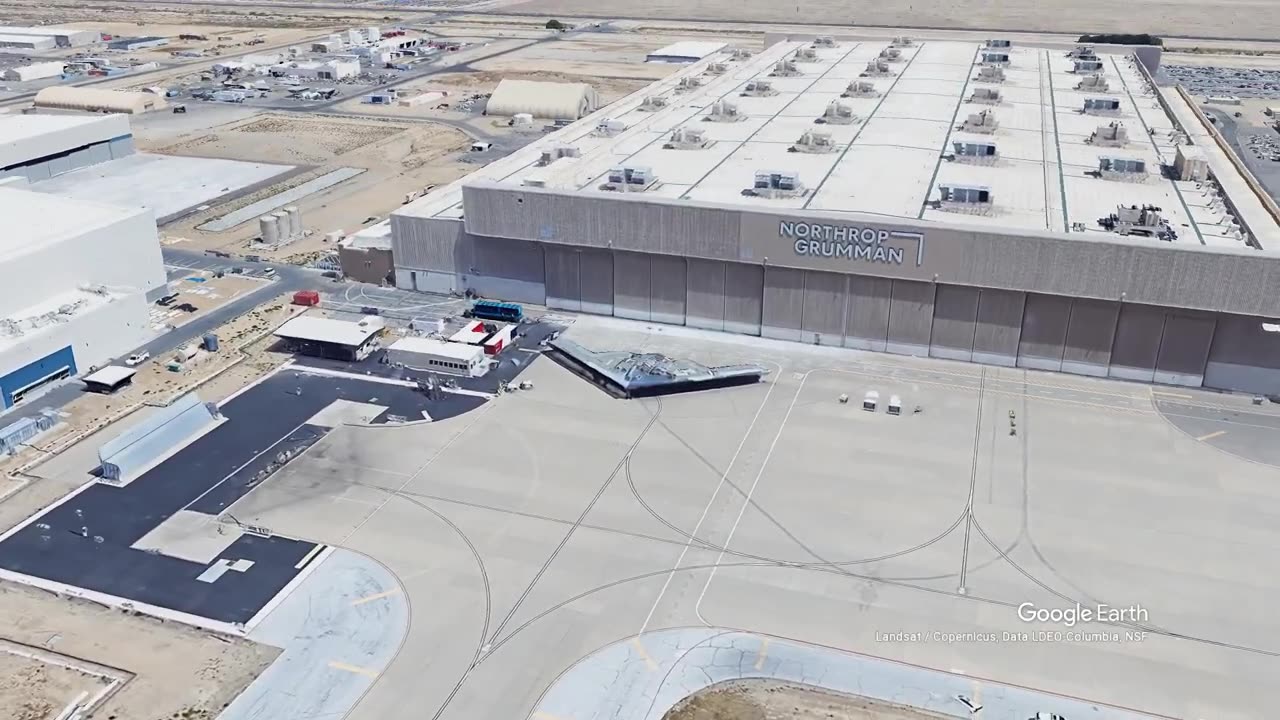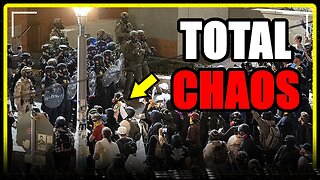Premium Only Content

The Silent Destroyer of Palmdale: A B-2 Spirit Tale
In the heart of Palmdale, California, where the desert sun burns down relentlessly, Air Force Plant 42 conceals a deadly secret amidst its sprawling hangars.
This facility, a cornerstone of U.S. military innovation, birthed the B-2 Spirit, known as the "Spirit of Innovation."
Crafted by Northrop Grumman, this stealth bomber is a marvel of engineering, its sleek, bat-like wings and radar-absorbent skin embodying unparalleled power.
Equipped with four General Electric F118-GE-100 turbofan engines, it delivers a thunderous 69,200 pounds of thrust, enabling a top speed above Mach 0.95 and a combat ceiling exceeding 50,000 feet.
Capable of carrying a devastating payload of over 40,000 pounds—including precision-guided JDAMs and the colossal 30,000-pound Massive Ordnance Penetrator—this silent predator can strike from 6,000 nautical miles away, its stealth rendering it nearly invisible to enemy radar.
Built to deliver lethal precision and catastrophic destruction, the B-2 stands as a formidable force of modern warfare.
In 1999, during Operation Allied Force in Kosovo, the B-2 struck. Flying 30 hours from Whiteman Air Force Base, it dropped bombs that demolished Serbian bases—defenses turned to rubble, proving its global reach.
In 2001, for Operation Enduring Freedom in Afghanistan, it unleashed JDAMs on October 7. Taliban caves exploded into fragments, Al-Qaeda hideouts reduced to debris, its stealth ensuring total surprise.
In 2003, Operation Iraqi Freedom saw its fury. On March 21, it obliterated 300 targets in one night—bunkers blown apart, air defenses shattered into twisted metal with pinpoint accuracy.
In 2011, during Operation Odyssey Dawn in Libya, the B-2’s bombs turned air defenses to ash, government strongholds to rubble, clearing the path for rebels.
In 2014, Operation Inherent Resolve called it to Iraq and Syria. Its 30,000-pound Massive Ordnance Penetrator smashed ISIS tunnels, leaving craters where bunkers once stood.
Between missions, the B-2 returned to Palmdale for repairs at Plant 42, its stealth skin prepped for more chaos. It also flew training runs, a silent destroyer over the desert.
Maintenance wasn’t cheap—an estimated $779 million to $1.196 billion annually for the fleet, $41 million to $62.96 million per aircraft.
In summary, the U.S. spends this vast sum to keep the 19 active B-2s operational, yet with new propulsion and energy systems on the horizon, its future remains uncertain.
As twilight draped Palmdale in golden hues, an engineer stood before the B-2, its dark form a silent testament to chaos. He saw the scars of Kosovo and Syria in his mind’s eye—fields of ruin left in its wake. “You are the harbinger of doom, the mother of destruction,” he confessed, his voice heavy with the gravity of its legacy.
-
 30:48
30:48
SouthernbelleReacts
1 day ago $14.28 earnedI Finally Watched Trick ’r Treat… And I’m NOT OKAY 😭🎃 | Halloween Horror Reaction
116K13 -
 13:49
13:49
Clintonjaws
16 hours ago $24.53 earnedWOW Trump Just Said He's Doing This To Canada
18.3K36 -
 46:43
46:43
WanderingWithWine
10 days ago $16.44 earned5 Dream Homes in Beautiful Tuscany! | Italian Property For Sale
22.5K5 -
 7:23
7:23
Danny Rayes
4 days ago $7.48 earnedAI Is Getting Out of Control...
17.3K4 -
 13:39
13:39
Fit'n Fire
17 hours ago $5.11 earnedKel-Tec RDB Got Even Better?
17.2K1 -
 9:02
9:02
Advanced Level Diagnostics
7 days ago $3.93 earned2007 Toyota Camry - I Wish They Were All This Simple!
16.5K2 -
 4:22
4:22
NAG Daily
16 hours agoRUMBLE RUNDOWN – THE RUMBLE COLLAB SHOW EP.1 W/GreenMan Reports
16.5K8 -
 1:46:35
1:46:35
Badlands Media
1 day agoDevolution Power Hour Ep. 401: Trump’s Third Term, AI Judges & the New Revolution
447K96 -
 4:44:53
4:44:53
MattMorseTV
14 hours ago $246.39 earned🔴Antifa action INBOUND.🔴
225K178 -
 2:11:24
2:11:24
Tundra Tactical
17 hours ago $89.76 earnedTundra Nation Live - Tundra's Guns?? We Finally See What Tundra Shoots
61.7K4